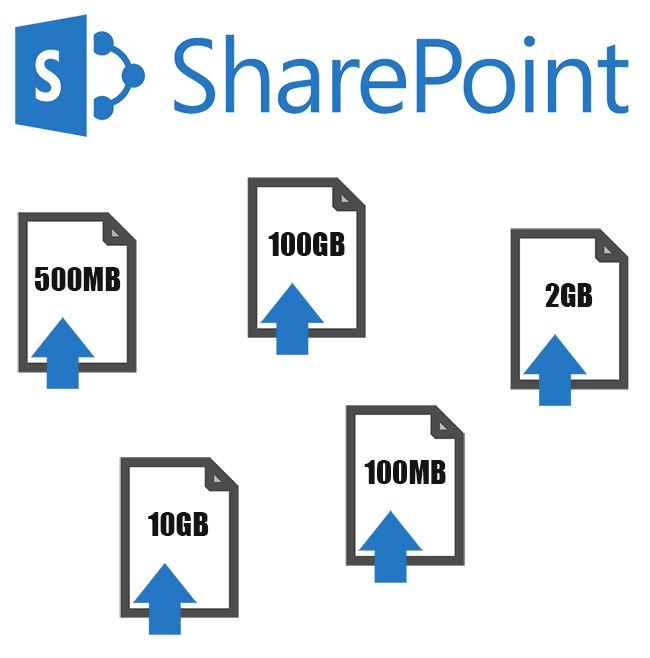How to store large files in SharePoint
October 24, 2014 by The Bridge Solutions Group Team

Microsoft® SharePoint®. As a central knowledge repository, it’s great. It’s collaborative. And it’s business friendly. Why?
First, it’s easy to limit file and folder access. Second, it enforces version control, so you don’t end up with disparate versions of the same file. And third, you can build document workflows that enforce your business rules.
Sounds perfect, right? Well… yes… unless….
Large file limitations
What’s that? You have a file that’s 100MB? Hmmm… 2GB? 10GB? Oh dear. Houston, we have a problem.
We’ll have to create an exception to those rules. Let’s make folders on the local network…PowerPoint files with embedded spreadsheets can go in this folder, video files in another, and database files in a third folder. Ok?
Wait… You have users in North America and Asia who need access to the same files? Hmmm…. we’ll need to have duplicates on each continent. So much for the central repository. Is there a better way?
Ultra high-speed data transfer
What if you could store all those large files in SharePoint? Yes, that’s right, 100MB, 1GB or 10GB files. Transferred to your existing SharePoint library in seconds.
Video files, large files with embedded content, database files. All in one location.
Imagine how easy file management would be. No more lost files. No more duplicate files and versions. No more security breaches because someone forgot to change access permissions on a local network folder.
You’d finally have a truly centralized knowledge repository. With all the access control and other benefits of SharePoint.
Sound interesting? Want to know how to do it?
1000x faster than FTP
Aspera. It’s an application that works with SharePoint to move your files at maximum speed. How?
By eliminating bottlenecks and fully utilizing available bandwidth, it’s patented faspTM technology moves your files faster, regardless of distance (US to Asia or Europe? No problem.) So you really can store all your files in one central repository. No exceptions.
Filed under: Blog, Supply Chain

 For FREE insights into how to improve your supply chain, simply enter your contact information for access to our entire library of eBooks, whitepapers and data sheets.
For FREE insights into how to improve your supply chain, simply enter your contact information for access to our entire library of eBooks, whitepapers and data sheets. You'll be missing out on access to hundreds of pages of supply chain industry ideas and insights that will make you look great in your next meeting.
You'll be missing out on access to hundreds of pages of supply chain industry ideas and insights that will make you look great in your next meeting.